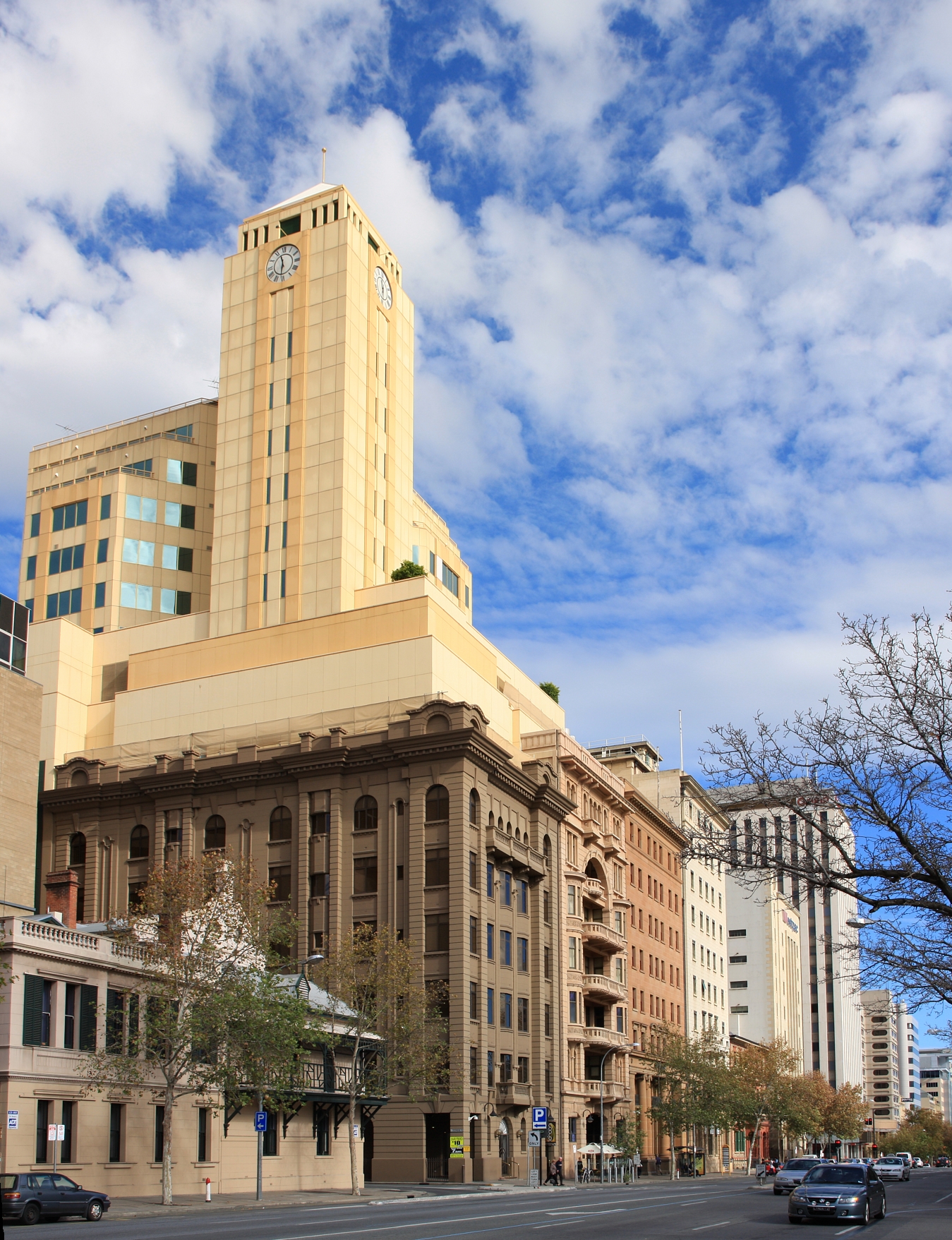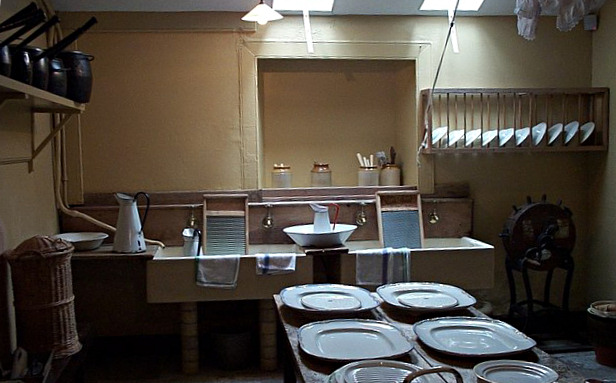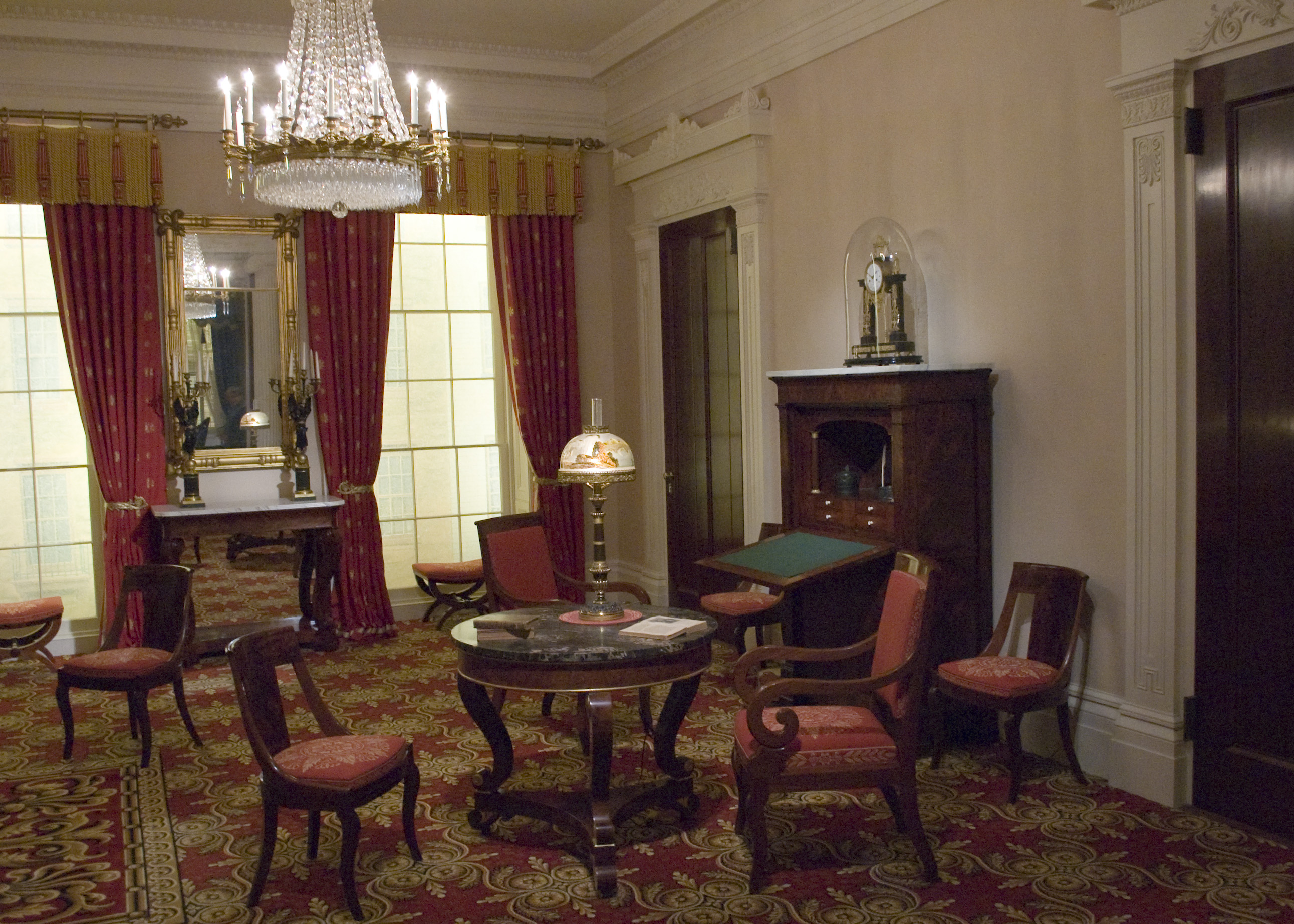|
Carclew, North Adelaide
Carclew is a Federation style mansion built in 1897, located in the Adelaide suburb of North Adelaide, overlooking the Adelaide city centre city from Montefiore Hill. The building is known for being the premises of the cultural organisation dedicated to artistic development of young people, now known simply as Carclew, which has been housed in the building since 1971. History The site was originally sold in the first Adelaide land sale of 1837, purchased by George Curtis for 12 shillings. In 1861 the site contained a simple two-storey brick dwelling, a wall surrounding the house and a stable. It was purchased by a stockbroker James Chambers in 1861, who in the same year sponsored the expedition of John McDouall Stuart, which was launched from the site. A plaque on the property's surrounding wall commemorates the event. The expedition was the first successful European crossing of the continent, but James Chambers died at the property before Stuart's return. In 1862 the site was ... [...More Info...] [...Related Items...] OR: [Wikipedia] [Google] [Baidu] |
North Adelaide
North Adelaide is a predominantly residential precinct (Australia), precinct and suburb of the City of Adelaide in South Australia, situated north of the River Torrens and within the Adelaide Park Lands. Laid out in a grid plan in three sections by William Light, Colonel William Light in 1837, the suburb contains many grand old mansions. History Surveyor-General William Light, Colonel William Light of the colony of South Australia completed the survey for the capital city of Adelaide by 10 March 1837. The survey included , including north of the River Torrens. This surveyed land north of the river became North Adelaide. North Adelaide was the birthplace of William Lawrence Bragg (1890–1971), co-recipient of the Nobel Prize for Physics in 1915, and Emily Dorothea Pavy (1885–1967), a teacher, sociologist, researcher, and lawyer. Kumanka The Kumanka Boys' Hostel located at 206 Childers Terrace, was operated by the South Australian Government between 1946 and 1980. In 194 ... [...More Info...] [...Related Items...] OR: [Wikipedia] [Google] [Baidu] |
North Terrace, Adelaide
North Terrace is one of the four terraces that bound the central business and residential district of Adelaide, the capital city of South Australia. It runs east–west along the northern edge of "the square mile". The western end continues on to Port Road and the eastern end continues across the Adelaide Parklands as Botanic Road. North side of North Terrace Theoretically, the northern side of North Terrace is part of the Adelaide Parklands. However, much of the space between North Terrace and the River Torrens is occupied by cultural institutions and other public buildings. Starting from West Terrace and travelling east, these buildings include: ( West Terrace) * Parkland * Royal Adelaide Hospital * South Australian Health and Medical Research Institute (SAHMRI) * Adelaide Medical and Nursing Schools ( University of Adelaide) * University of South Australia Cancer Research Institute (previously the site of City Sk8 Park, a skateboarding facility) ( Morphett ... [...More Info...] [...Related Items...] OR: [Wikipedia] [Google] [Baidu] |
Adelaide Review
''The Adelaide Review'' (AR) was a monthly print arts magazine and dynamic website in Adelaide, South Australia. It was first published in 1984, but gained standing after one of its writers, Christopher Pearson, took it over in 1985. In March 2019, it was one of only two "broad-spectrum non- Murdoch print media" publications in Adelaide, the other one being '' SA Life''. Its 488th and final issue was published in print and online on 1 October 2020. History ''The Adelaide Review'' existed in a number of forms since 1984, as both a magazine and a newspaper.''Advertising in The Adelaide Review'' , August 2004, The Adelaide Review Archives. Retrieved 2 Aug 2010. The first edition came out in March 1984. Christopher Pearson bought the rights to ''The Adelaide Preview'', ... [...More Info...] [...Related Items...] OR: [Wikipedia] [Google] [Baidu] |
South Australian Government
The Government of South Australia, also referred to as the South Australian Government or the SA Government, is the executive branch of the state of South Australia. It is modelled on the Westminster system, meaning that the highest ranking members of the executive are drawn from an elected state parliament. Specifically the party or coalition which holds a majority of the House of Assembly (the lower chamber of the South Australian Parliament). History South Australia was established via letters patent by King William IV in February of 1836, pursuant to the ''South Australian Colonisation Act 1834''. Governance in the colony was organised according to the principles developed by Edward Wakefield, where settlement would be conducted by free settlers rather than convicts. Therefore governance would be divided between the Governor who was responsible to the British Crown and tasked with the authority to make laws, and Colonisation Commissioners who were responsible for the s ... [...More Info...] [...Related Items...] OR: [Wikipedia] [Google] [Baidu] |
Don Dunstan
Donald Allan Dunstan (21 September 1926 – 6 February 1999) was an Australian politician who served as the 35th premier of South Australia from 1967 to 1968, and again from 1970 to 1979. He was a member of the House of Assembly (MHA) for the division of Norwood from 1953 to 1979, and leader of the South Australian Branch of the Australian Labor Party from 1967 to 1979. Before becoming premier, Dunstan served as the 38th attorney-general of South Australia and the treasurer of South Australia. He is the fourth longest serving premier in South Australian history. In the late 1950s, Dunstan became well known for his campaign against the death penalty being imposed on Max Stuart, who was convicted of rape and murder of a small girl, opposing then-Premier Thomas Playford over the matter. During Labor's time in opposition, Dunstan was prominent in securing some reforms in Aboriginal rights and in Labor abandoning the White Australia policy. Dunstan became Attorney-General ... [...More Info...] [...Related Items...] OR: [Wikipedia] [Google] [Baidu] |
Sunroom
A sunroom, also frequently called a solarium (and sometimes a "Florida room", "garden conservatory", "garden room", " patio room", "sun parlor", "sun porch", "three season room" or " winter garden"), is a room that permits abundant daylight and views of the landscape while sheltering from adverse weather. ''Sunroom'' and ''solarium'' have the same denotation: ''solarium'' is Latin for "place of sun ight. Solaria of various forms have been erected throughout European history. Currently, the sunroom or solarium is popular in Europe, Canada, the United States, Australia, and New Zealand. Sunrooms may feature passive solar building design to heat and illuminate them. In Great Britain, which has a long history of formal conservatories, a ''small'' conservatory is sometimes denominated a "sunroom". In gardening, a garden room is a secluded and partly enclosed outside space within a garden that creates a room-like effect. Design Attached sunrooms typically are constructed of ... [...More Info...] [...Related Items...] OR: [Wikipedia] [Google] [Baidu] |
Scullery
A scullery is a room in a house, traditionally used for washing up dishes and laundering clothes, or as an overflow kitchen. Tasks performed in the scullery include cleaning dishes and cooking utensils (or storing them), occasional kitchen work, ironing, boiling water for cooking or bathing, and soaking and washing clothes. Sculleries contain hot and cold sinks, sometimes slop sinks, drain pipes, storage shelves, plate racks, a work table, various coppers for boiling water, tubs, and buckets. The term "scullery" has fallen into disuse in North America, as laundry takes place in a utility room or laundry room. The term continues in use in its original sense in Britain and Ireland amongst the middle classes, or as an alternative term for kitchen in some regions of Britain, typically Northern Ireland and Scotland, or in designer kitchens. In United States military facilities and most commercial restaurants, a "scullery" refers to the section of a dining facility where pots an ... [...More Info...] [...Related Items...] OR: [Wikipedia] [Google] [Baidu] |
Parlour
A parlour (or parlor) is a reception room or public space. In medieval Christian Europe, the "outer parlour" was the room where the monks or nuns conducted business with those outside the monastery and the "inner parlour" was used for necessary conversation between resident members. In the English-speaking world of the 18th and 19th century, having a parlour room was evidence of social status. Etymology In the early 13th century, parlor originally referred to a room where monks could go to talk, derived from the Old French word ''parloir'' or ''parler'' ("to speak"), it entered the English language around the turn of the 16th century. History The first known use of the word to denote a room was in medieval Christian Europe, when it designated the two rooms in a monastery where clergy, constrained by vow or regulation from speaking otherwise in the cloister, were allowed to converse without disturbing their fellows. The "outer parlour" was the room where the monks or nuns ... [...More Info...] [...Related Items...] OR: [Wikipedia] [Google] [Baidu] |
Morning Room
Morning is either the period from sunrise to noon, or the period from midnight to noon. In the first definition it is preceded by the twilight period of dawn, and there are no exact times for when morning begins (also true of evening and night) because it can vary according to one's latitude, and the hours of daylight at each time of year. However, morning strictly ends at noon, when afternoon starts. Morning precedes afternoon, evening, and night in the sequence of a day. Originally, the term referred to sunrise. Etymology The Modern English words "morning" and "tomorrow" began in Middle English as , developing into , then , and eventually . English, unlike some other languages, has separate terms for "morning" and "tomorrow", despite their common root. Other languages, like Dutch language, Dutch, Scots language, Scots and German language, German, may use a single wordto signify both "morning" and "tomorrow". Significance Cultural implications Morning prayer is a common prac ... [...More Info...] [...Related Items...] OR: [Wikipedia] [Google] [Baidu] |
Ballroom
A ballroom or ballhall is a large room inside a building, the primary purpose of which is holding large formal parties called ''balls''. Traditionally, most balls were held in private residences; many mansions and palaces, especially historic mansions and palaces, contain one or more ballrooms. In other large houses, a large room such as the main drawing room, long gallery, or hall may double as a ballroom, but, a good ballroom should have the right type of flooring, such as hardwood flooring or stone flooring (usually marble or stone).. For most styles of modern dance, a wooden sprung floor offers the best surface. In later times the term ballroom has been used to describe nightclubs where customers dance, the Top Rank Suites in the United Kingdom for example were also often referred to as ballrooms. The phrase "having a ball" has grown to encompass many events where person(s) are having fun, not just dancing. Ballrooms are generally quite large, and may have ceilings ... [...More Info...] [...Related Items...] OR: [Wikipedia] [Google] [Baidu] |
Slate
Slate is a fine-grained, foliated, homogeneous, metamorphic rock derived from an original shale-type sedimentary rock composed of clay or volcanic ash through low-grade, regional metamorphism. It is the finest-grained foliated metamorphic rock. Foliation may not correspond to the original sedimentary layering, but instead is in planes perpendicular to the direction of metamorphic compression. The foliation in slate, called " slaty cleavage", is caused by strong compression in which fine-grained clay forms flakes to regrow in planes perpendicular to the compression. When expertly "cut" by striking parallel to the foliation with a specialized tool in the quarry, many slates display a property called fissility, forming smooth, flat sheets of stone which have long been used for roofing, floor tiles, and other purposes. Slate is frequently grey in color, especially when seen ''en masse'' covering roofs. However, slate occurs in a variety of colors even from a single locality; for ... [...More Info...] [...Related Items...] OR: [Wikipedia] [Google] [Baidu] |
Corrugated Iron
Corrugated galvanised iron (CGI) or steel, colloquially corrugated iron (near universal), wriggly tin (taken from UK military slang), pailing (in Caribbean English), corrugated sheet metal (in North America), zinc (in Cyprus and Nigeria) or custom orb / corro sheet (Australia), is a building material composed of sheets of hot-dip galvanizing, hot-dip galvanised mild steel, cold forming, cold-rolled to produce a linear ridged pattern in them. Although it is still popularly called "iron" in the UK, the material used is actually steel (which is iron alloyed with carbon for strength, commonly 0.3% carbon), and only the surviving vintage sheets may actually be made up of 100% iron. The corrugations increase the bending strength of the sheet in the direction perpendicular to the corrugations, but not parallel to them, because the steel must be stretched to bend perpendicular to the corrugations. Normally each sheet is manufactured longer in its strong direction. CGI is lightweight ... [...More Info...] [...Related Items...] OR: [Wikipedia] [Google] [Baidu] |







